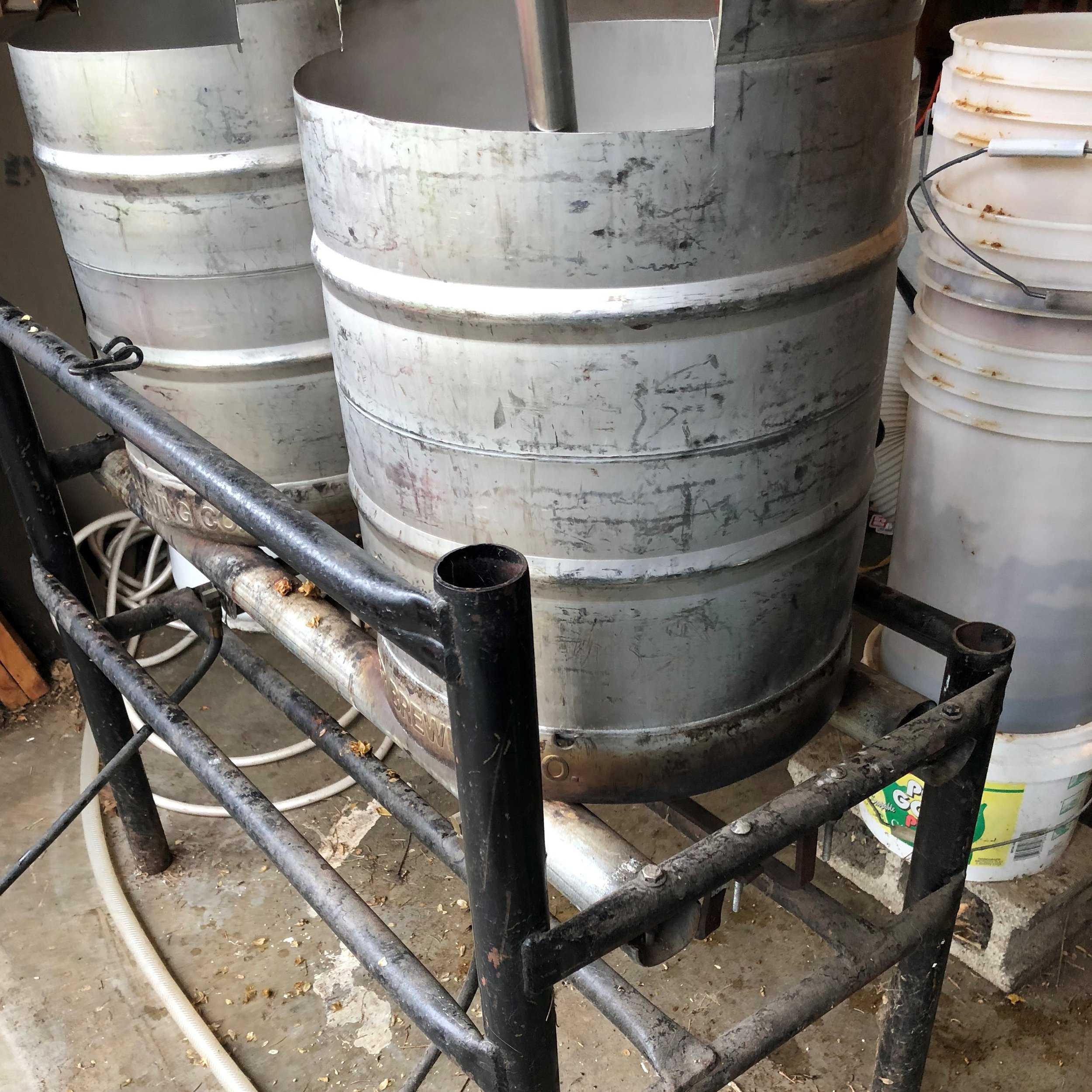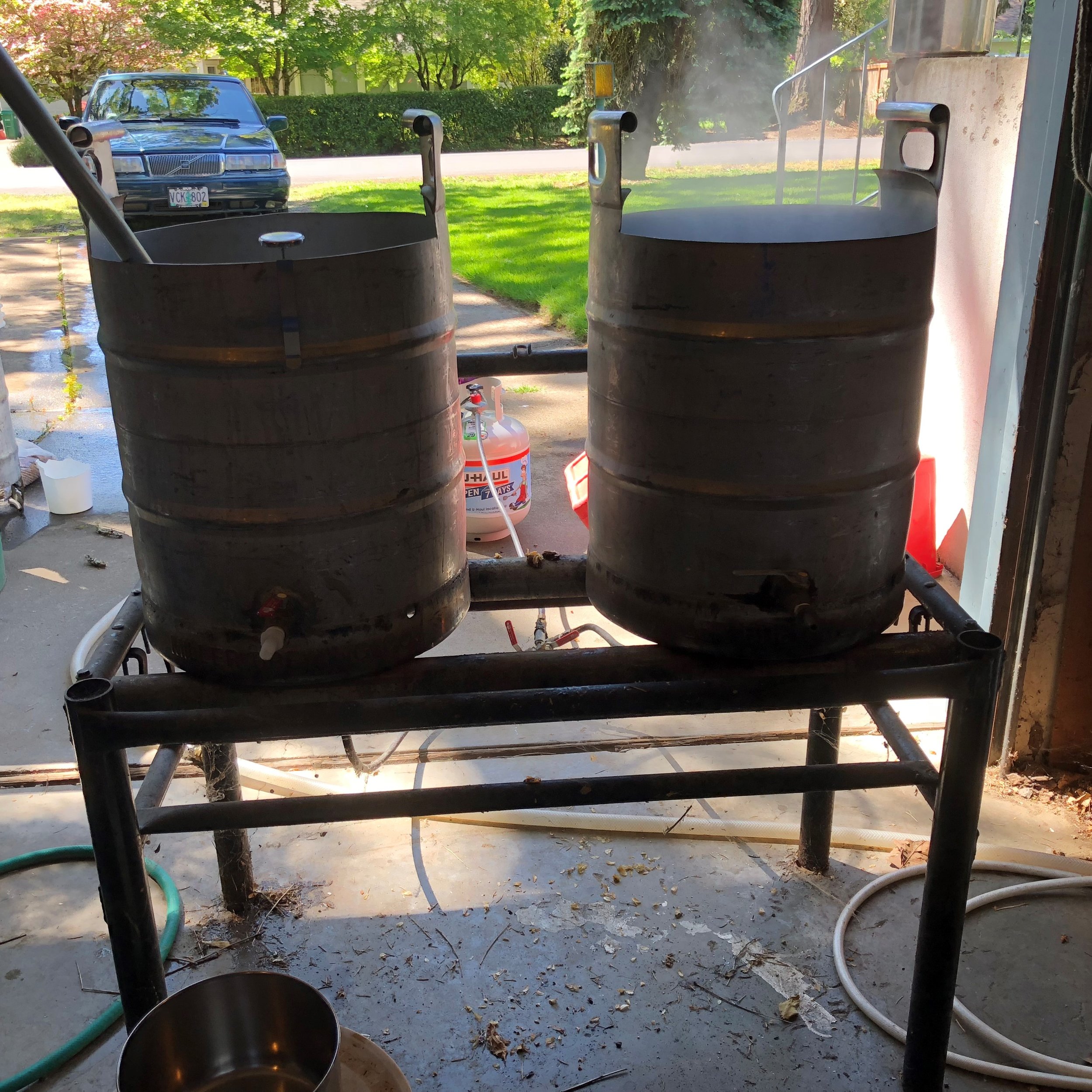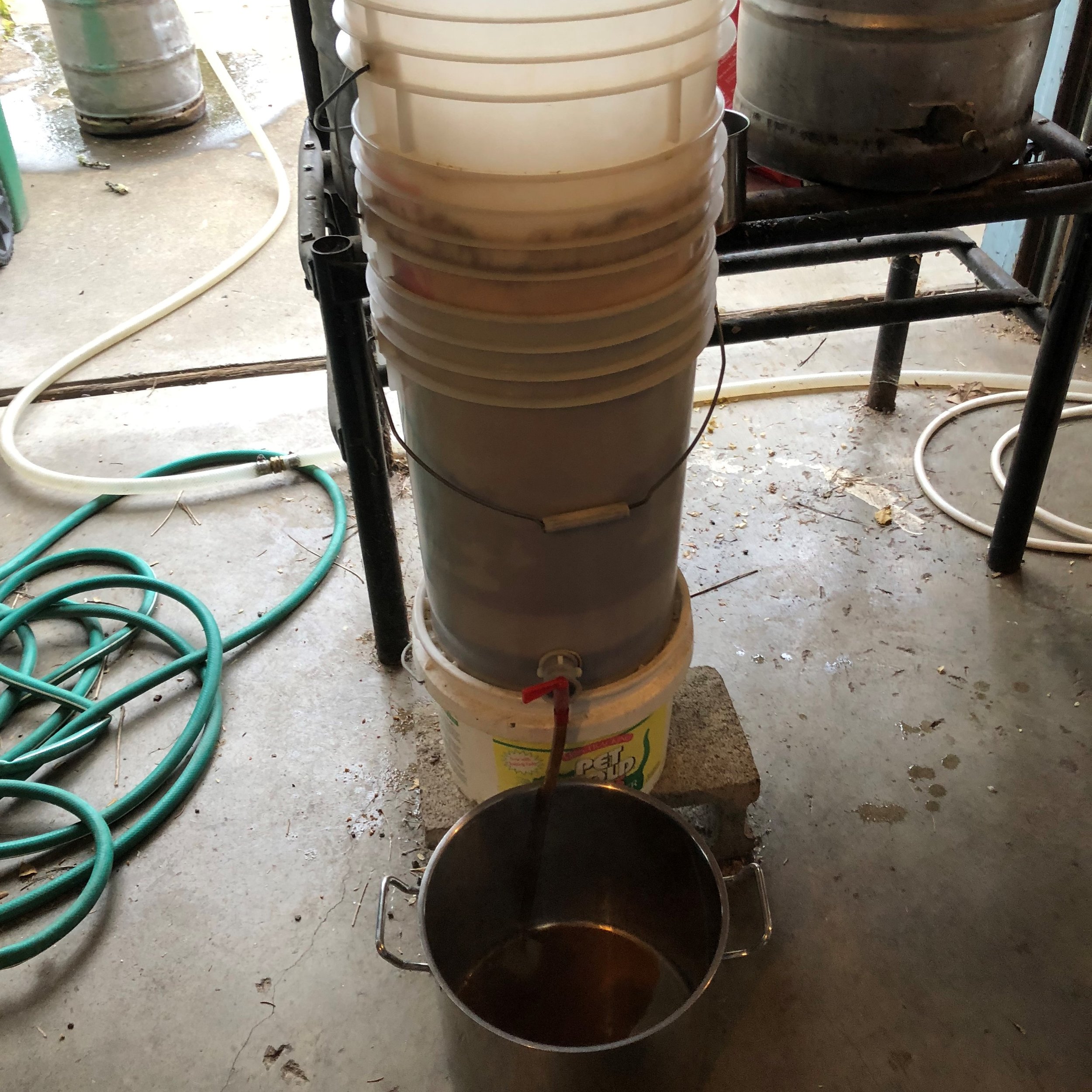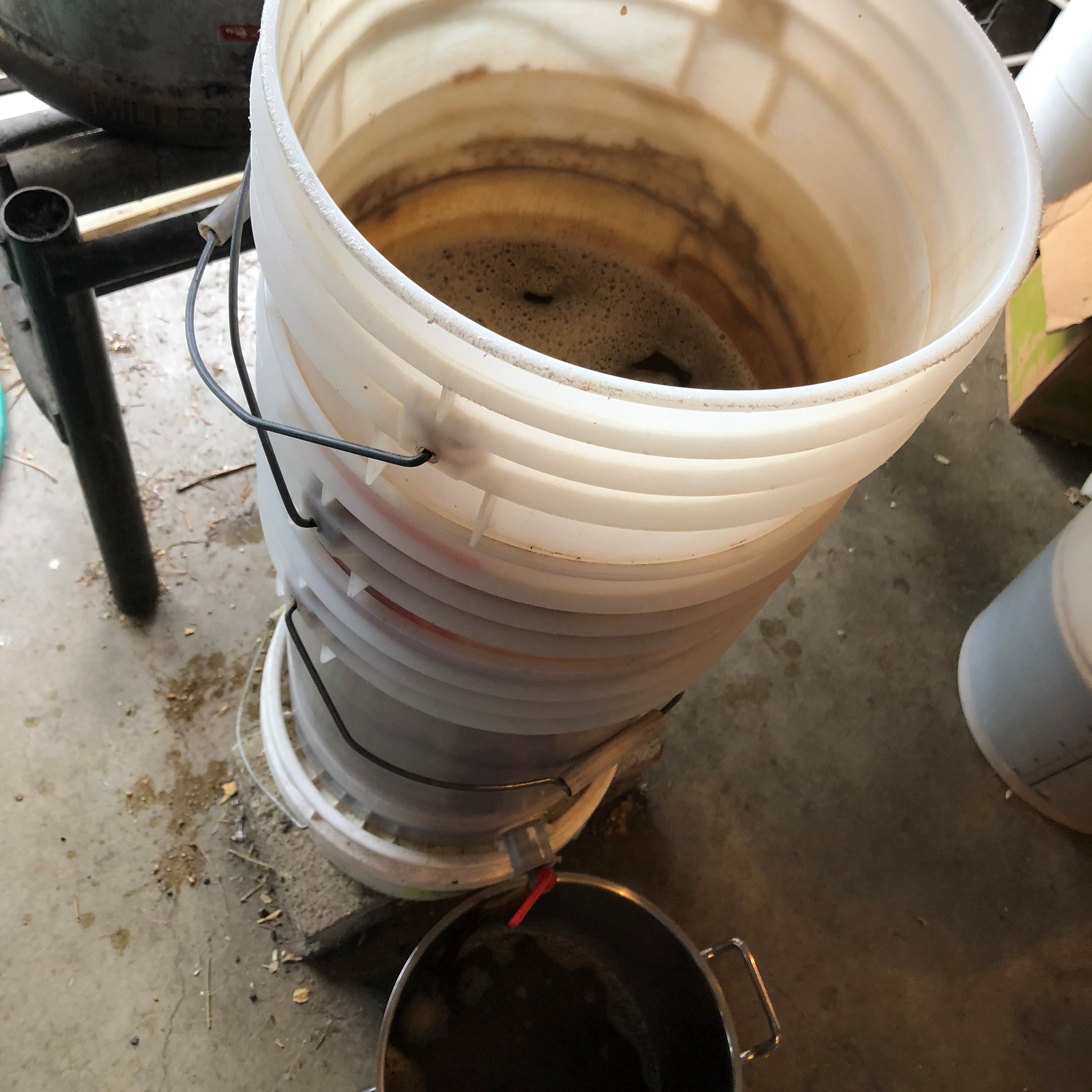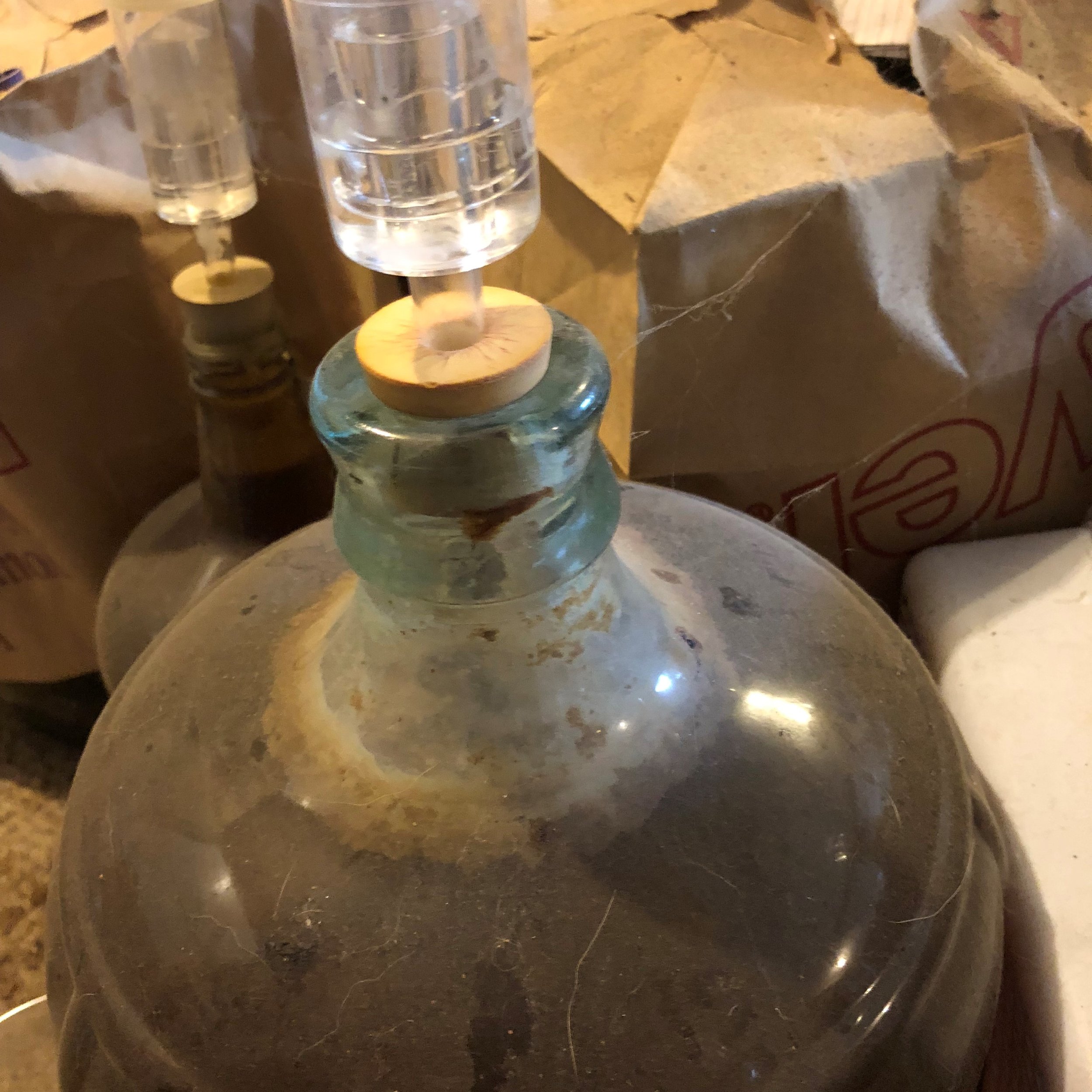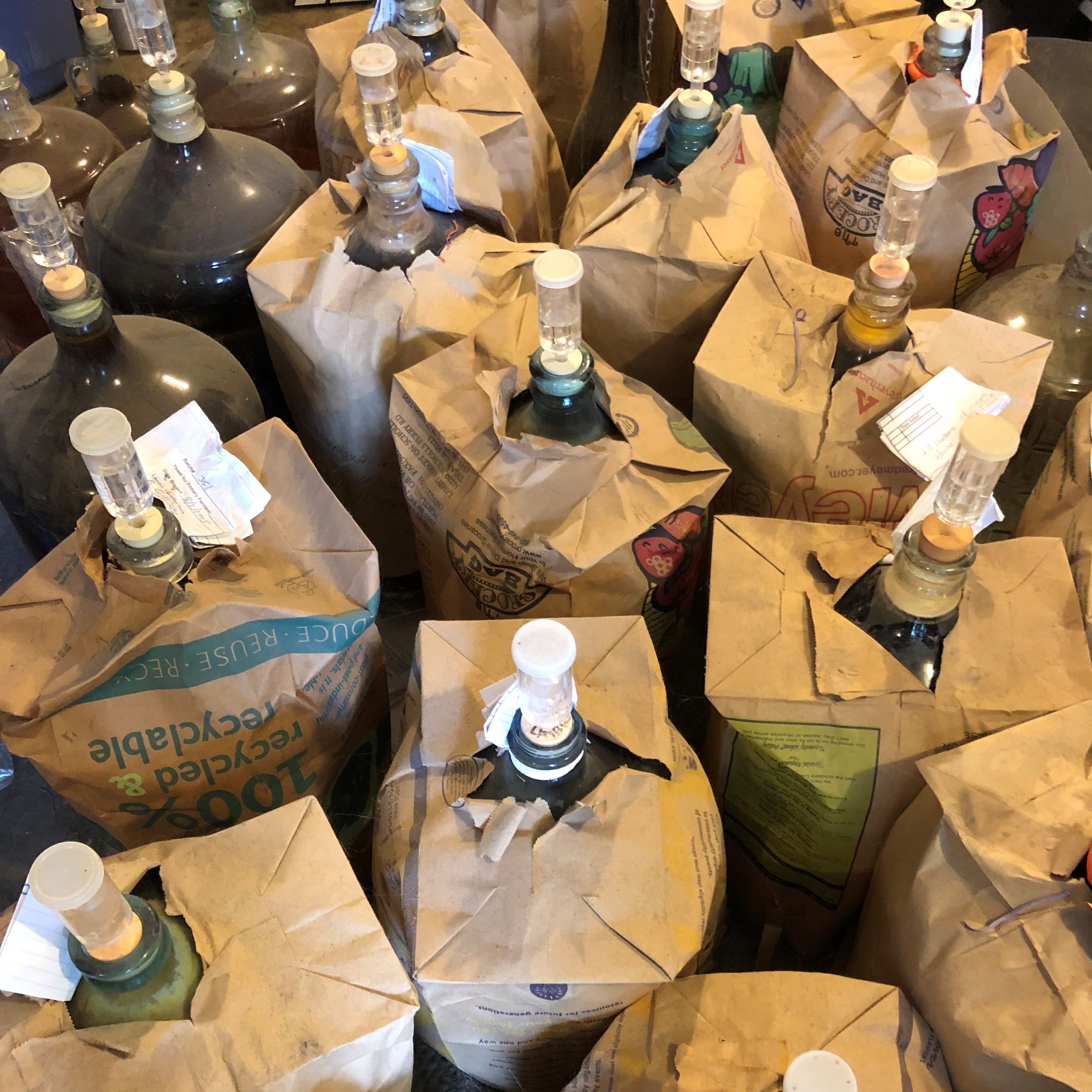Meet the Brewer: Bill Schneller
Bill Schneller (right) with 13 Virtues' Dave Vohden. Photo: John Foyston/Brewpublic.
Later this month, Portland will become the center of the homebrewing universe, as Homebrew Con--the American Homebrewer Association's annual conference--visits Beervana. We spend a lot of time discussing the approaches and philosophies of commercial breweries, but I thought it would be nice to hear about some of our celebrated local homebrewers--whose beers are in many cases more forward-looking, accomplished, and interesting than what you find in your local brewpub.
“Yeah, there’s some science involved and it pays to know the basics, but it’s really a craft and you get better by doing it. You learn to brew better beer by brewing more beer.”
I have known Bill Schneller for a number of years, and when I thought of doing this series, his name was the first one that popped into my mind. He is one of the most interesting homebrewers in Portland, and someone I turned to when writing The Secrets of Master Brewers. He is also a west-sider. I had visions of trekking out to his side of the city to see his set-up--west-siders are inevitably drawn east by the gravity of all the beeriness on this side of the river--but instead, he sent me an amazingly detailed email about his life and approach to brewing. A brewer in his own words--who could pass that up? I'll have to make it to his garage another time.
Bill was drawn to beer and Oregon thanks to his related passion--wine. He was living in New York after college and working at wine stores when he decided to come to Oregon to learn how to make it professionally. The initial winemaking plan didn't work out and he fell into a different career. It didn't pay well, and he could no longer afford expensive wines, so a friend taught him "homebrewing"--or a facsimile thereof. ("Old yeast, one can of malt extract, and 3 lbs of corn sugar.") His reaction to the product of this experiment will be familiar to anyone who's caught the homebrew bug:
“I thought it was the most amazing brown ale ever, and I was hooked.”
When I describe both the act of homebrewing and homebrewers themselves to non-brewers, I try to communicate the way in which the invention and creation is what animates so many of them. The beer is an important reward, but it's not always the central joy. Listen to how Bill describes the process of discovery at the start of his homebrewing career--it perfectly captures this spirit.
I started brewing in 1998 and did about twelve batches of extract/steeping specialty grain before jumping to all grain. I had no real equipment so I mashed in two pots on the stove top and then boiled in a third (one four-gallon and two-two gallon stock pots). It worked. The double bucket lauter tun I still use is from that time period. It was a weird setup and process but I did it with a friend and we made 200 batches that way before graduating to a ten-gallon system. The first couple of batches on the ten-gallon system didn't come out as expected. We experimented with different mash tuns and lautering, but it never came out as well, so we changed as much of our process back to the weird, fucked up way we did it in the kitchen and the beer got better. Maybe that's why I still use the old weird, manual system I have. It's far from ideal, but I've brewed 550+ batches of beer that way so I feel like I know how to get the results I want.
He described it in a bit more detail:
My system is also incredibly simple and manual. I have a double burner that's actually made from an old metal garbage can stand from Louisiana (where apparently you don't put your garbage cans on the ground). I got it from a friend who put two burners in it. I have three separate old kegs with the tops cut off. One is basically just a big old pot with no spigot and no false bottom, and I mash in it. It's direct heat which is nice for step mashes (which I only do with lagers). The other two have spigots and one is the hot liquor tank and the other is the boil kettle with a bazooka screen in it. Sparge is done in an old double bucket ala Charlie Papazian and I use a four-gallon pot as a grant to collect what comes out of the lauter tun (double bucket).
Bill is the second homebrewer I've included in this series, and I was surprised to learn that the first, multi-award winner Rodney Kibzey, also uses a very simple set-up. There is a different school of brewers, typified by John Palmer, who are incredibly scientific in their approach and who have impressively-engineered systems. Both Bill and Rodney are technically-minded (both are in IT), so I expected them to fall into Palmer's camp. For different reasons, simple systems suit their approach. In Bill's case, I think it may have something to do with the kinds of beers he's interested in.
For years, Bill has taught courses on beer appreciation at Portland Community College (though he's currently on a hiatus to recharge), and he has a comprehensive knowledge of beer history and beer styles. Over the years, he's partnered with breweries to brew historic recreations of obsolete styles, like Burton ale (seen most recently at Culmination). When I met him, Bill was deep in a lambic phase, but he's always loved the British tradition and it seems in recent years to have come more to the fore. ("I can drink the same bitter or mild all night if it's well done.") These are the two most elemental forms of brewing, producing beers that embody the organic quality of beer the most. If you're making bitters and lambics, having an extremely sophisticated set-up would seem like overkill.
I still have my lambic "farm"--about 100 gallons in carboys. I still love the style, even with my current penchant for UK beers. The key to making lambic at home is simple: make each carboy different (different profile per carboy by adding different bugs), age the beers at least two years and then blend as many of them as you can. I'm not particularly good at blending. I marvel at people who can keep a consistent house style. I realized early on that I don't have what it takes to make consistent blends so I go for variety and taste 6-10 lots of beer and try to think what will work (one gallon of this, two of that, one of this other one, etc). Invariably they change in the bottle. I've won three best of shows for them so I think in my ineptitude I stumbled on the secrets which are really blending and age. It's two weeks of beer making and two to three years of winemaking. (I think my love of wine is responsible for my love of lambic.)
Bill is, temperamentally, a born teacher. Years ago, as Mount Angel Abbey was considering starting a brewery, they invited Bill in to do a guided tasting for the monks. He wove a discussion of the sensory elements together with a description of way ingredients express themselves and how history and brewing traditions produced the styles we were tasting. It's no surprise that he's become one of the most accomplished and respected beer judges in Oregon--and his inclination to teach rather than judge makes him an asset to new brewers interested in picking up the hobby.
Judging came kind of naturally to me because of my training in the wine business. The wine industry does a far better job of teaching people how taste and talk about wine than the beer industry does, but the beer industry is catching up. It's great to see people describing beer so well now. As much as I dislike the push for exotic and weird beer, I like the fact that it's gained enough traction that people have a better sense of how to talk about it. The beer lexicon has broken out into the general public, sort of like wine did 20-25 years ago. I think that's a great thing and I'm happy to see that.
Bill with a pint of his mild.
If I could highlight anything Bill does for newer homebrewers, it's his attention to traditional process. I approached him for my homebrew book because I knew he made his own invert sugar--a type of sugar used in Britain to make classic pub styles. It's not an easy process. You end up standing over a pot of bubbling sugar that spatters little molten balls onto your skin for sometimes hours. Bill does it because it gives a particular flavor to the ales he argues you can't get anywhere else. In this way, he is fastidiously technical. This is the way of all traditional brewers, though--they put their efforts where it will have influence and ignore the rest. His discussion of malt's place in brewing is illustrative of his approach to brewing, and why he loves traditional styles.
I think about beer like I think about bread. The soul of bread is flour. Sure you can add milk, eggs, seeds, nuts, spices, citrus, etc., but at the end of the day, flour is the soul of bread and if you add too much of everything else and not enough flour, it's no longer bread. It can still be delicious, but it's not bread. For me, malt is soul of beer. Yeah, hops add a lot as does yeast, and you can add spices, fruit, bacteria to make it sour, oak, glitter, etc, but if you lose that core of malt you kind of lose the soul of the beer. I sometimes worry that innovation and the capitalist need for variety is pushing us to lose the soul of what beer is. Maybe I'm just a beer reactionary and the more people push the boundaries, the more I cling to tradition and dead or dying styles. But I do worry that collectively we lose a lot of shared culture if we ignore traditional styles.
But, because he is such a student of brewing, he added one final thought--an acknowledgement of the process that produces the beer we love in the first place. Bitters were the new upstart themselves less than a hundred years ago, and would soon displace milds, after all.
“But if I’ve learned anything studying beer history, it’s that styles are born, change and then disappear, oftentimes to be reborn and re-imagined by future brewers.”
Bill will be speaking at Homebrew Con on June 29th at 9am on--what else?--Burton ales. I encourage you to stop in if you're attending (and register if you're not!) so you can get a taste of Bill's approach to beer.
